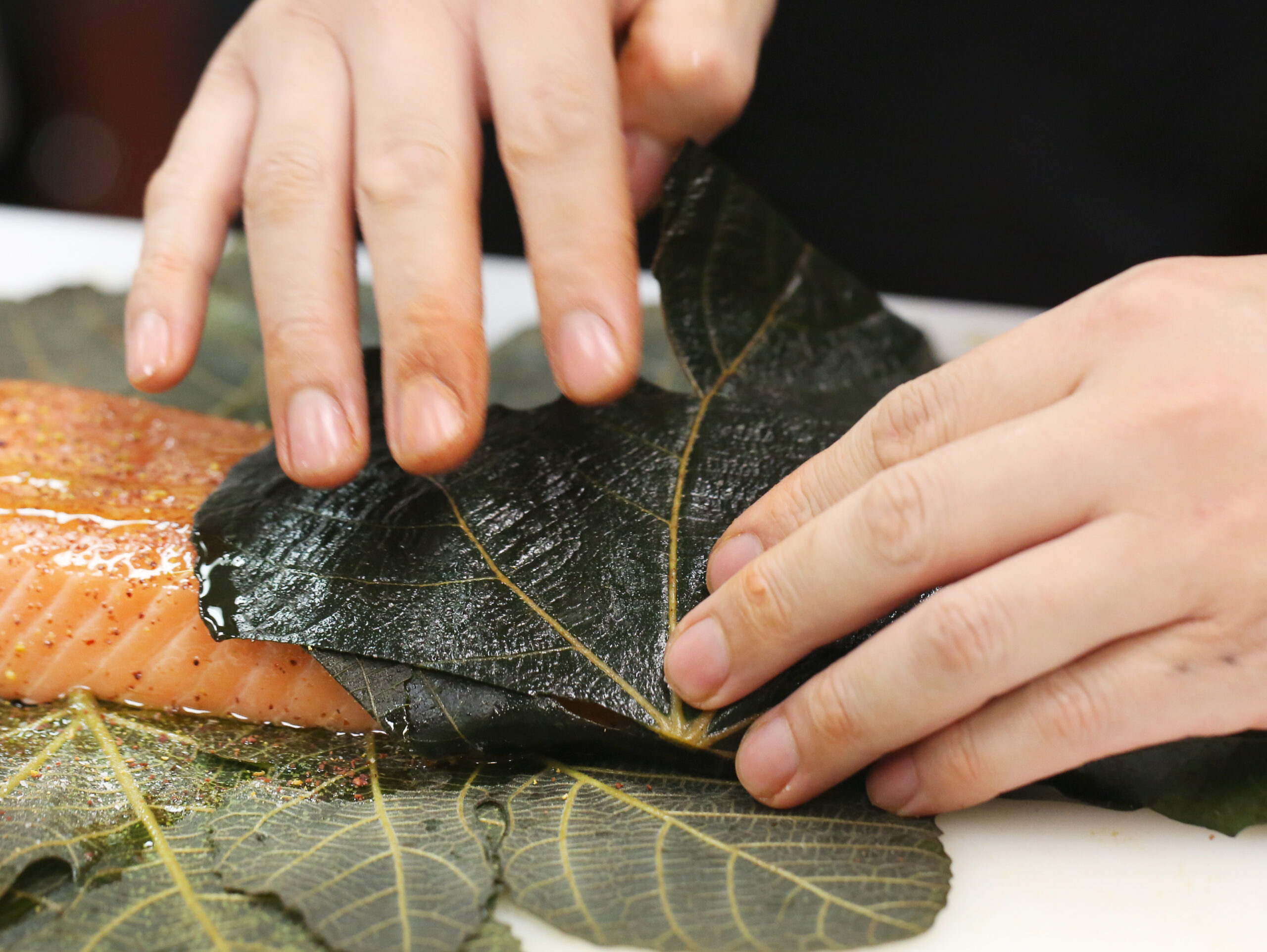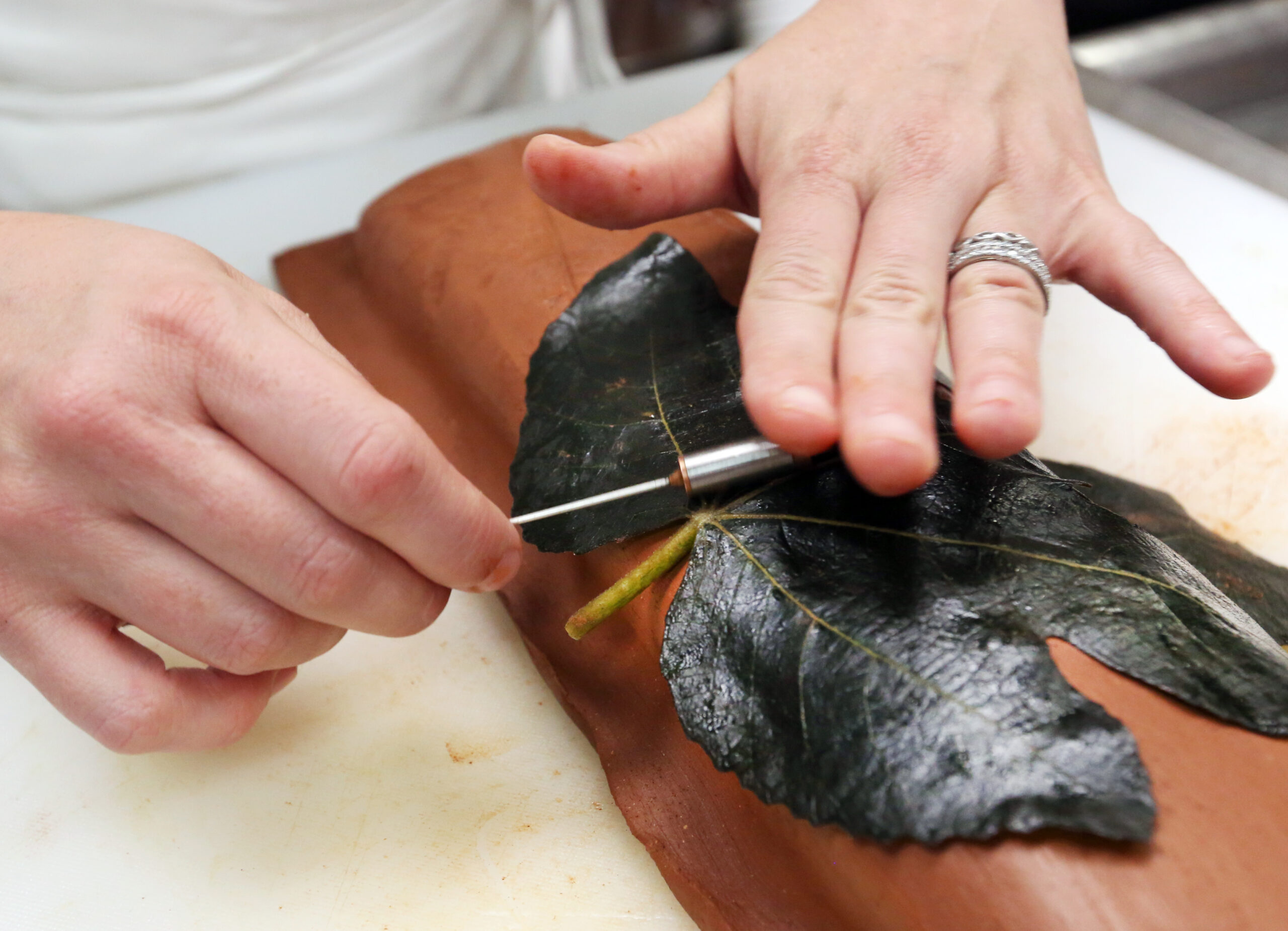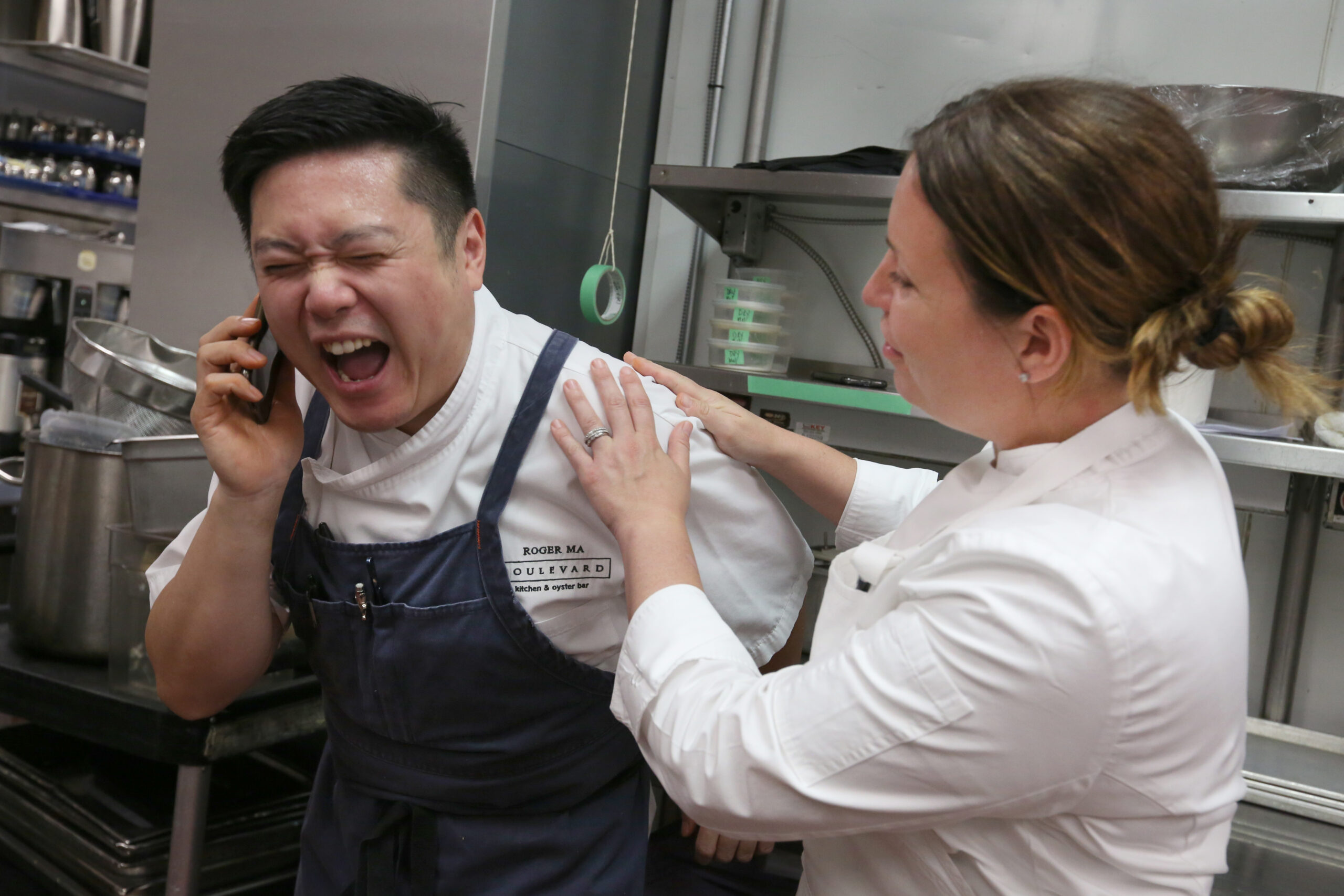It’s not often you walk into a professional kitchen and find the chef cutting a thick slice from a large block of fresh clay. “Don’t worry, it is food safe,” says Roger Ma, executive chef of Boulevard Kitchen and Oyster Bar, laughing.
Ma is collaborating with Melissa Rodriguez, executive chef of the Michelin-starred Del Posto, on a dinner to be held the following night in Vancouver. The two chefs know each other well: they worked together in New York under Daniel Boulud at his flagship French restaurant. When they started talking about the menu for this special dinner created for the “Michelin on the Road” series, they knew right away one course would reference their time at Daniel.
“This is an homage to Daniel Boulud,” Ma says as he rolls out the heavy clay that will eventually encase a side of salmon. Is that sweat on his forehead? “He’s doing the hard part,” says Rodriguez, with a smile, noting that between them, they must have made this dish “thousands of times.”
The technique is ancient—a pre-electric method that sits somewhere between pressure-cooking and sous vide—creating a moisture trap that effectively steams the fish. Back in the day, the parcel would have been placed directly in the fire; here, it will be baked for eight minutes in a 400°F oven, then rested for a further 15 minutes, before a hammer is used to break open the earthen shell.
Once the clay resembles a sheet of pastry (albeit made of terracotta), Ma places a layer of fig leaves on top. The leaves have come from the freezer, their rigid structure broken down by the cold, leaving them more malleable. A beautifully trimmed side of wild spring salmon is laid on top and seasoned with fennel pollen, espelette pepper, and sumac. Then Ma carefully wraps the fig leaves tight around the fish, to provide not just fragrance and flavour, but to make sure the salmon flesh doesn’t come into direct contact with its sarcophagus. A second sheet of clay is placed on the salmon, and Ma gently presses it down and around to completely encase the fish. This is painstaking work: if the clay cracks or any pockets of air remain, the entire process will fail.
Rodriguez adds the final flourish. Referencing the foliage inside, the terracotta cooking vessel, and the ancient process, she decorates the exterior by pressing on the veins of another fig leaf to create a relief pattern in the still-soft clay. As part of a six-course tasting menu, this one salmon will serve 20 diners.
Ma rolls up his sleeves and reaches for the block of clay: four more to go.
Read more about food.














